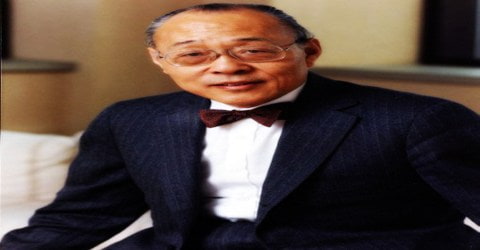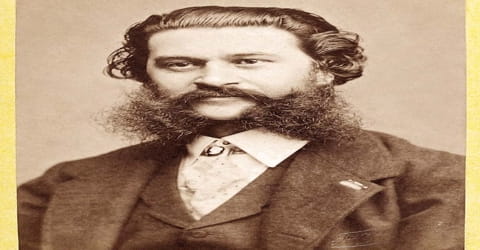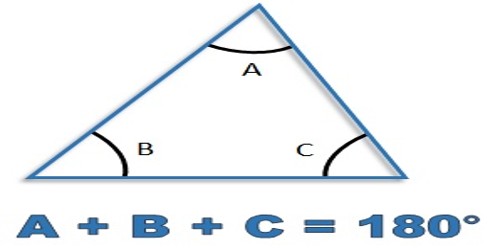Biography of An Wang
An Wang – Chinese-American computer engineer and inventor.
Name: An Wang
Date of Birth: February 7, 1920
Place of Birth: Shanghai, China
Date of Death: March 24, 1990 (aged 70)
Place of Death: Boston, United States
Occupation: Engineer
Father: Zen Wan Wang
Mother: Yin Lu
Spouse/Ex: Lorraine Chiu (m. 1949)
Children: 3
Early Life
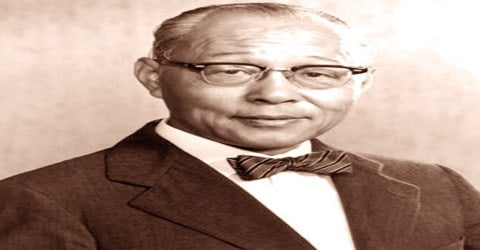
A Chinese-born American electronics engineer and inventor, who made important inventions relating to computer memories and to electronic calculators, An Wang was born on 7th February 1920, in Shanghai, China, the oldest of five children to Yin Lu and Zen Wan Wang. He was a Chinese immigrant and became an important figure in the electronics industry. An Wang co-founder of computer company Wang Laboratories, which was known primarily for its dedicated word processing machines.
An Wang’s successful journey began when he created a pulse transfer device, together with a colleague, which is an important part of the development of magnetic core memory. He followed this invention with the development of the write-after-read cycle thus solving the destructive readout problem, inherent to magnetic core memory. This was a key breakthrough in making magnetic core memory devices a viable option for storing data. He obtained a large sum of money from many organizations that used his patented design for construction of the memory pattern in manufacturing of computers. He used this money to establish his own company and thus founded Wang Laboratories. The company became a market leader in desktop calculators and also achieved success with word processors.
An Wang was an important contributor to the development of magnetic core memory. He was an inventor with the sharp business acumen and incorporated his ideas to expand his company successfully. He was one of the most celebrated engineers and entrepreneurs of the 20th century, who contributed significantly to the development of computers.
Childhood, Family and Educational Life
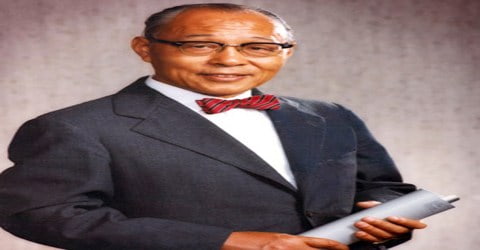
An Wang (Chinese: 王安; pinyin: Wáng Ān) was born on 7th February 1920 in Shanghai, China to Zen Wan Wang, an English teacher and his wife, Yin Lu. He was the oldest son of his family. He had an older sister, Hsu; a younger sister, Yu; and two younger brothers, Ping and Ge. His father taught him English at home.
An Wang began his formal schooling at age six when he entered the third grade. In elementary school, Wang began to excel in science and mathematics. He became interested in radio as a high school student built his own radio, and went on to study communications engineering at Chiao-Tung University in his native city. He earned a bachelor’s degree in science from Chiao-Tung University in Shanghai in 1940. He designed radio transmitters and receivers for China during World War II.
In 1945, An Wang immigrated to the United States and earned a Ph.D. in applied physics and engineering from Harvard University in 1948. After graduation, he worked for an American company for some months and then for a Canadian office of the Chinese government.
Personal Life
An Wang met Lorraine Chiu at a party and they got married in 1949. They were blessed with three children; Frederick, Courtney, and Juliet.
Career and Works

In the spring of 1948, An Wang started his work under Howard H. Aiken at the Harvard Computation Laboratory. He co-invented the pulse transfer controlling device which made magnetic core memory possible and filed the patent for it. This institution had built the ASSC Mark I, one of the world’s first digital computers, a few years earlier and was developing more advanced machines under a contract from the U.S. Air Force. Aiken asked Wang to develop a way to store and retrieve data in a computer using magnetic devices. Wang studied the magnetic properties of small doughnut-shaped rings of ferromagnetic material or materials that can become highly magnetized.
In June 1951, An Wang founded Wang Laboratories as a sole proprietorship. The first years were lean and Wang raised $50,000 working capital by selling one-third of the company to a machine tools manufacturer Warner & Swasey Company. When the core memory patent was issued, Wang sold it to IBM for $500,000 and incorporated Wang Laboratories with Ge-Yao Chu, a schoolmate, in 1955. The company grew slowly and in 1964 sales reached $1,000,000. Wang began making desktop electronic calculators with digital displays, including a centralized calculator with remote terminals for group use.
In the mid-1960s, An Wang invented a digital logarithmic converter that made it possible to perform routine arithmetic electronically at high speeds and relatively low cost. The company made huge profits selling the calculators designed with the help of his invention.
By 1969, Wang Laboratories had begun to produce less expensive calculators for wider business use. However, Wang saw that the introduction of other technology would allow competitors to sell electronic handheld calculators at a much lower price than the machines his company offered. In later years, An Wang directed his firm toward the manufacture of word processors and small business computers. The first Wang word processing systems were sold in 1976.
By 1970 the company had sales of $27 million and 1,400 employees. They began manufacturing word processors in 1974, copying the already popular Xerox Redactron word processor, a single-user, cassette-based product. They started marketing a multi-user, display-based product, based on the Zilog Z80 processor, in 1976. Typical installations had a master unit (supplying disk storage) connected to intelligent diskless slaves which the operators used. Connections were via dual coax using differential signaling in an 11-bit asynchronous ASCII format clocked at 4.275 MHz. This product became the market leader in the word processing industry. In addition to calculators and word processors, Wang’s company diversified into minicomputers in the early 1970s.
By the mid-1980s the company had expanded to over fifteen thousand employees working in several buildings in the old manufacturing town of Lowell, Massachusetts, and in factories and offices throughout the world. To acquire money to finance this expansion and to reward competent employees, Wang Laboratories sold stock and piled up a considerable debt. The Wang family retained control of the firm by limiting administrative power to a special class of shareholders. In the early 1980s when company growth slowed while debt remained large, Wang made some effort to reduce his personal control of the business and follow regular corporate management practices.
The Wang 2200 was one of the first desktop computers with a large CRT display and ran a fast hardwired BASIC interpreter. The Wang VS system was a multiuser minicomputer whose instruction set was very close to the design of IBM’s System/370. It was not binary-compatible because register usage conventions and system call interfaces were different. The Wang VS serial terminals could be used in data processing mode and word processing mode. They were user-programmable in data-processing mode and used the same word processing software as the earlier dedicated word processing systems.
An Wang served as president of the company until 1986 and was succeeded by his son Frederick. Wang invented many basic components for word-processing systems and held about 40 patents in all. Wang returned to his post in 1989 when the company faced a hard time in the computer industry.
The organization generated more than a billion dollars a year in 1982, and by 1989 sales were $3 billion a year. But Wang Laboratories fell on hard times as well. In the early 1990s, the former minicomputer maker fell into Chapter 11 bankruptcy and Wang died of cancer in March of 1990 at the age of seventy. The Eastman Kodak Company bought the Wang Software business unit for $260 million in cash, on 30th January 1997. The deal put Kodak into the document imaging and workflow business and took Wang out of software. Wang also began a relationship with Microsoft, and Michael Brown, chief financial officer for Microsoft, sat on Wang’s board of directors. The reorganization enabled the company to prosper once again.
An Wang also made a substantial contribution to the restoration of a Boston landmark, which was then called the Metropolitan Theatre. The “Met” was renamed in 1983 as The Wang Theatre, and the Metropolitan Center became known as the Wang Center for the Performing Arts. Wang donated $4 million to Massachusetts General Hospital’s ambulatory care center, which was renamed to the Wang Building.
Awards and Honor
An Wang was one of twelve recipients of the Medal of Liberty in 1986. He was inducted into the National Inventors Hall of Fame in 1988.
Harvard University has a professorship in Computer Science and Electrical Engineering named in his honor.
An Wang received an honorary doctoral degree from the Lowell Technological Institute.
Death and Legacy
An Wang died on 24th March 1990 in Boston, U.S. due to cancer. He and his wife, Lorraine (Chur) Wang, lived in Lincoln, Massachusetts. Lorraine Wang died on 1st March 2016, at Emerson Hospital in Concord, Massachusetts.
An Wang was the co-creator of a pulse transfer control device. This used the magnetic field of the core to control the switching of the current in a magnetic core memory device. He invented the write-after-read cycle. The process of reading the data stored in a magnetic core memory device destroys the data in what is called a destructive readout. The write-after-read cycle rewrote the data to the core making it more practical to use. He founded Wang Laboratories which became a multi-billion dollar electronic company with 30,000 employees at one point.
Wang’s engineering insight and business success made him a fellow (member) of the Institute of Electrical and Electronic Engineers and a fellow of the American Academy of Arts and Sciences. He received an honorary doctoral degree from the Lowell Technological Institute.
Information Source:
